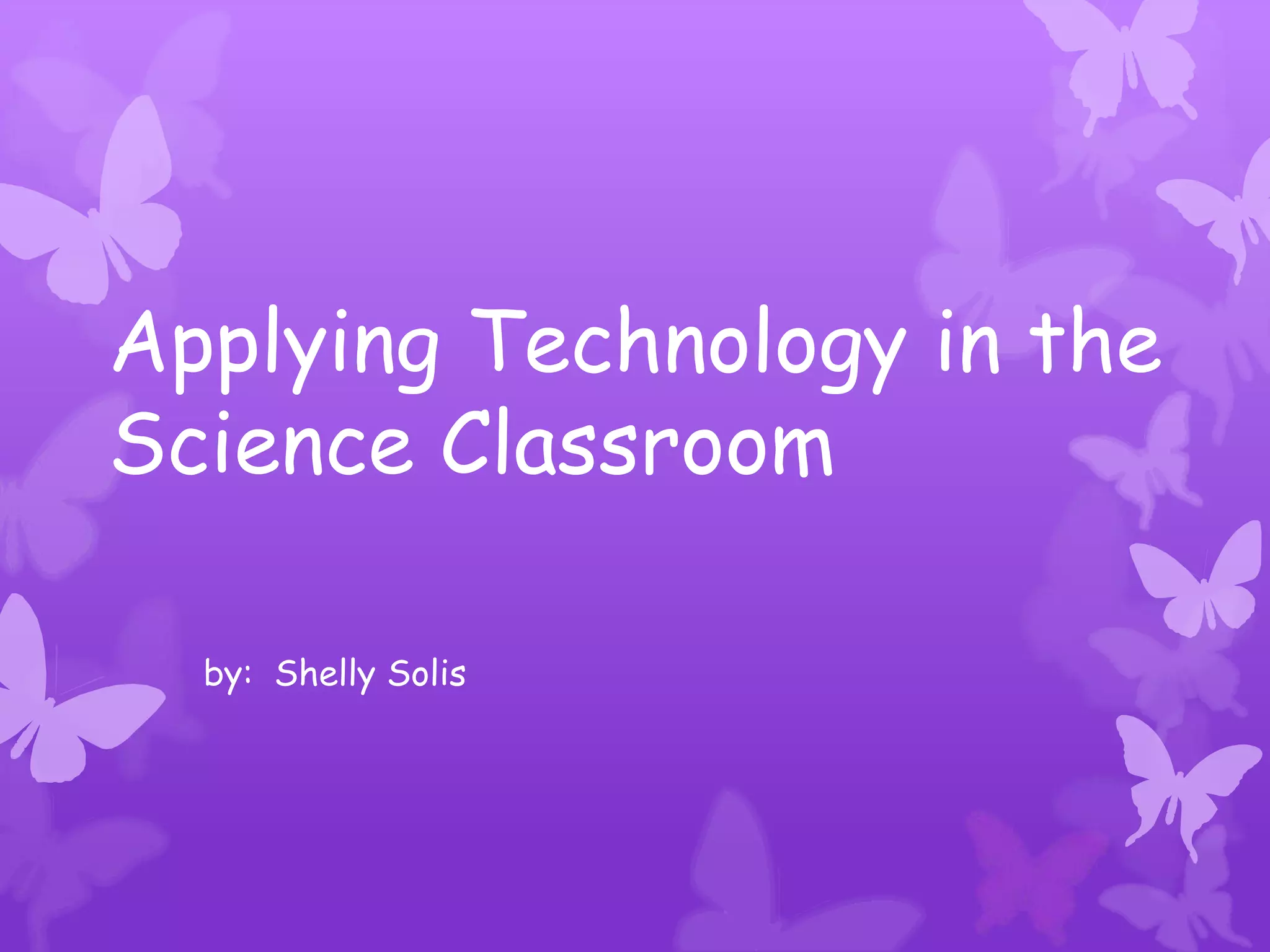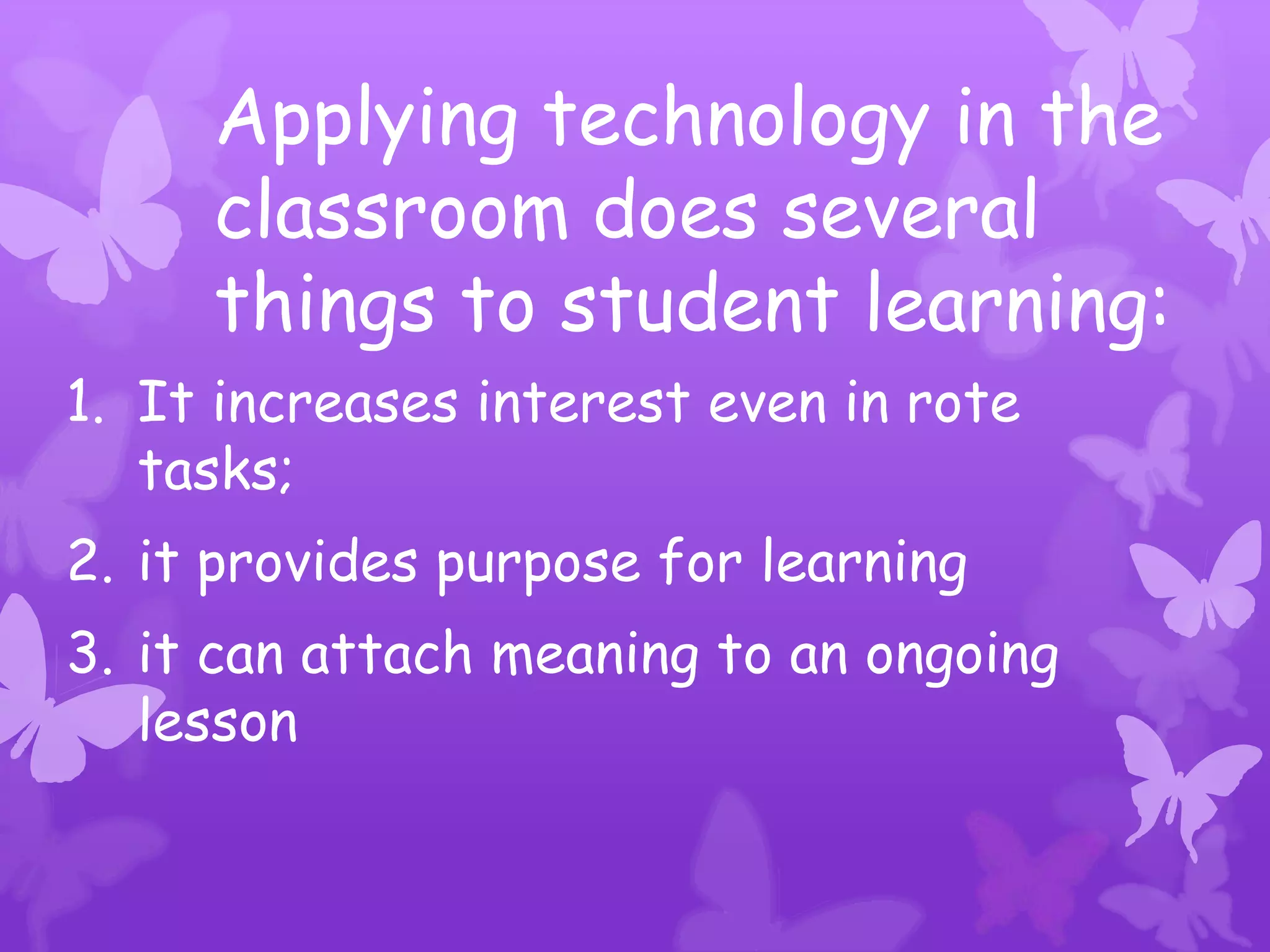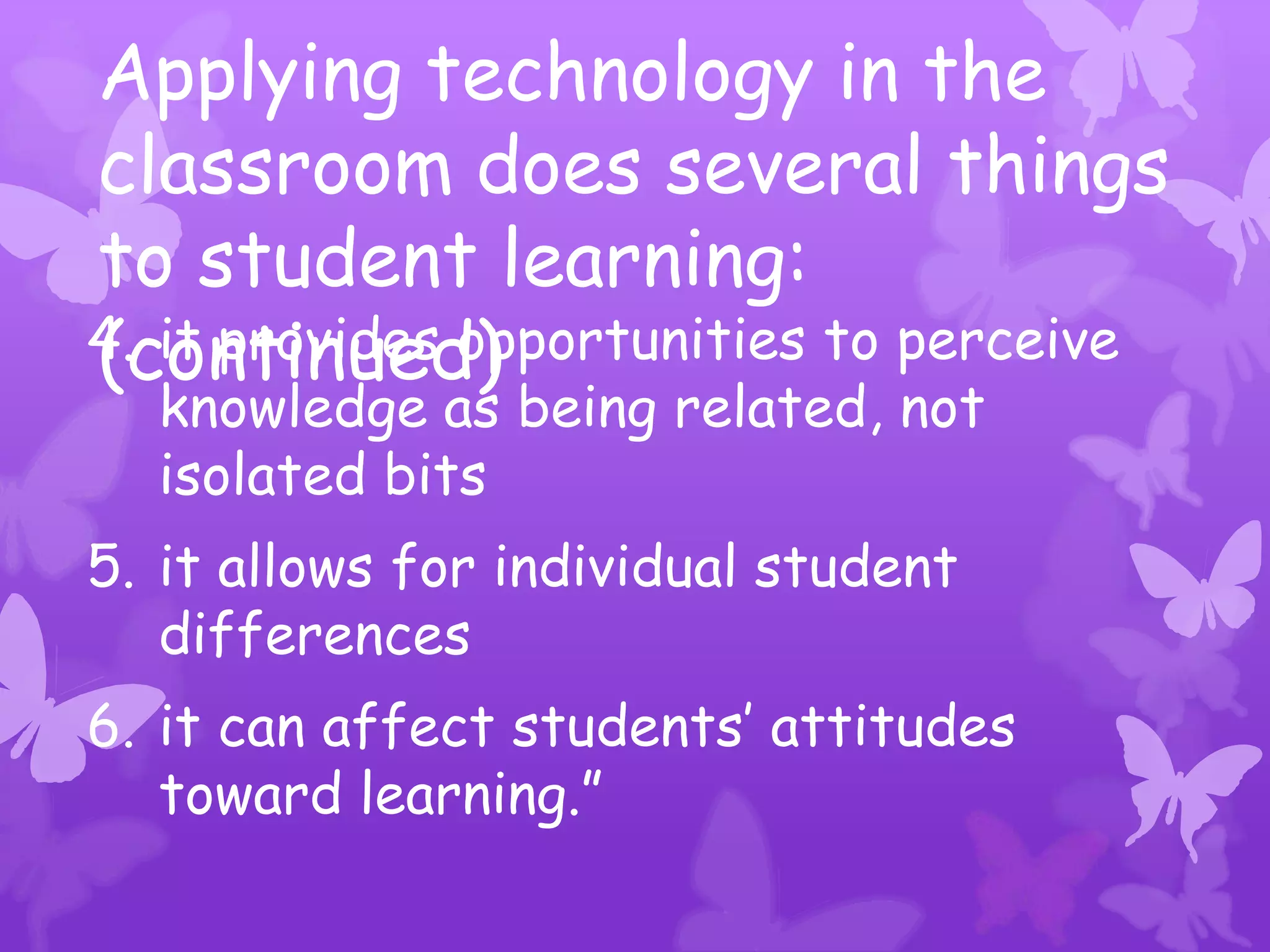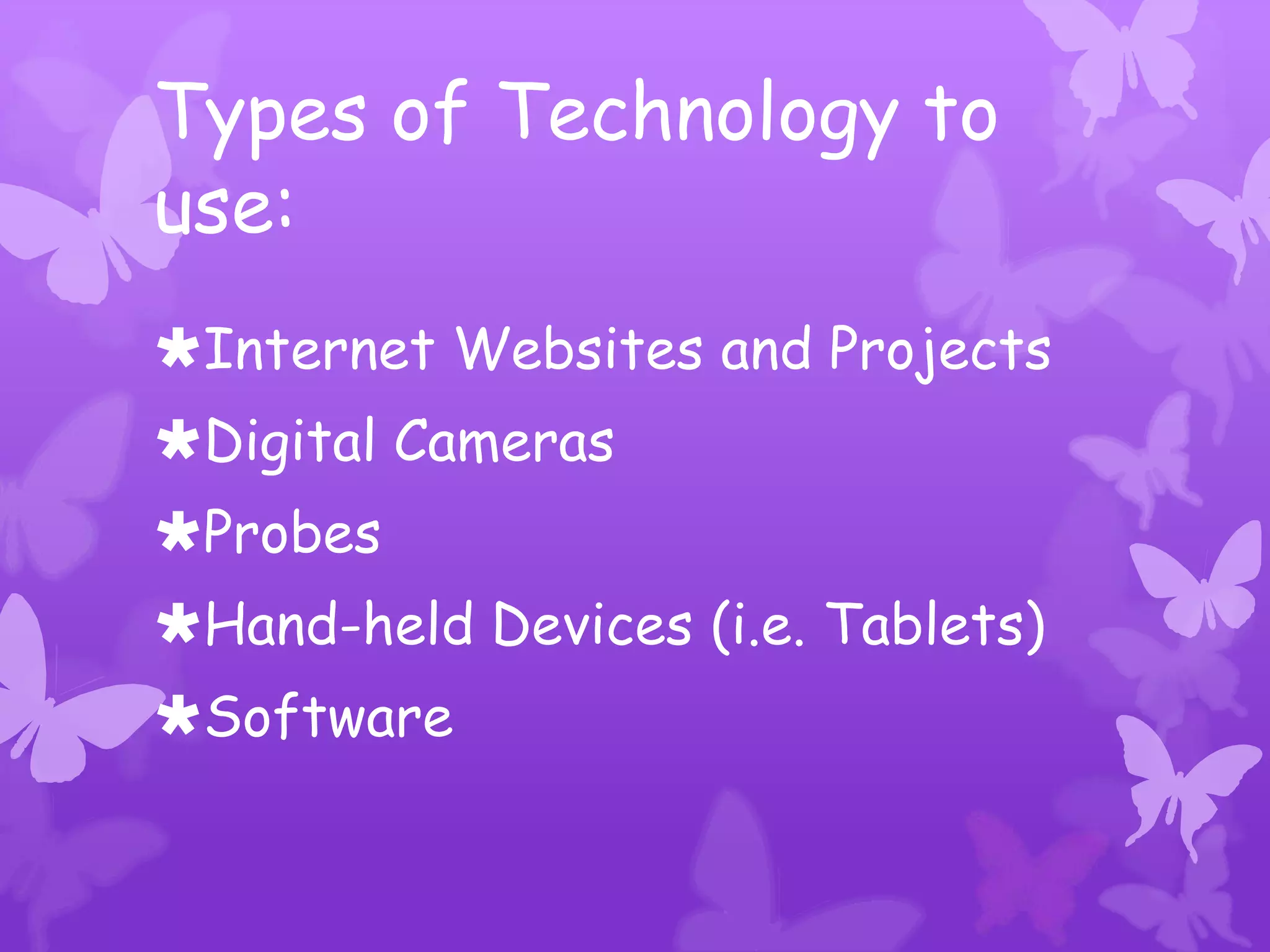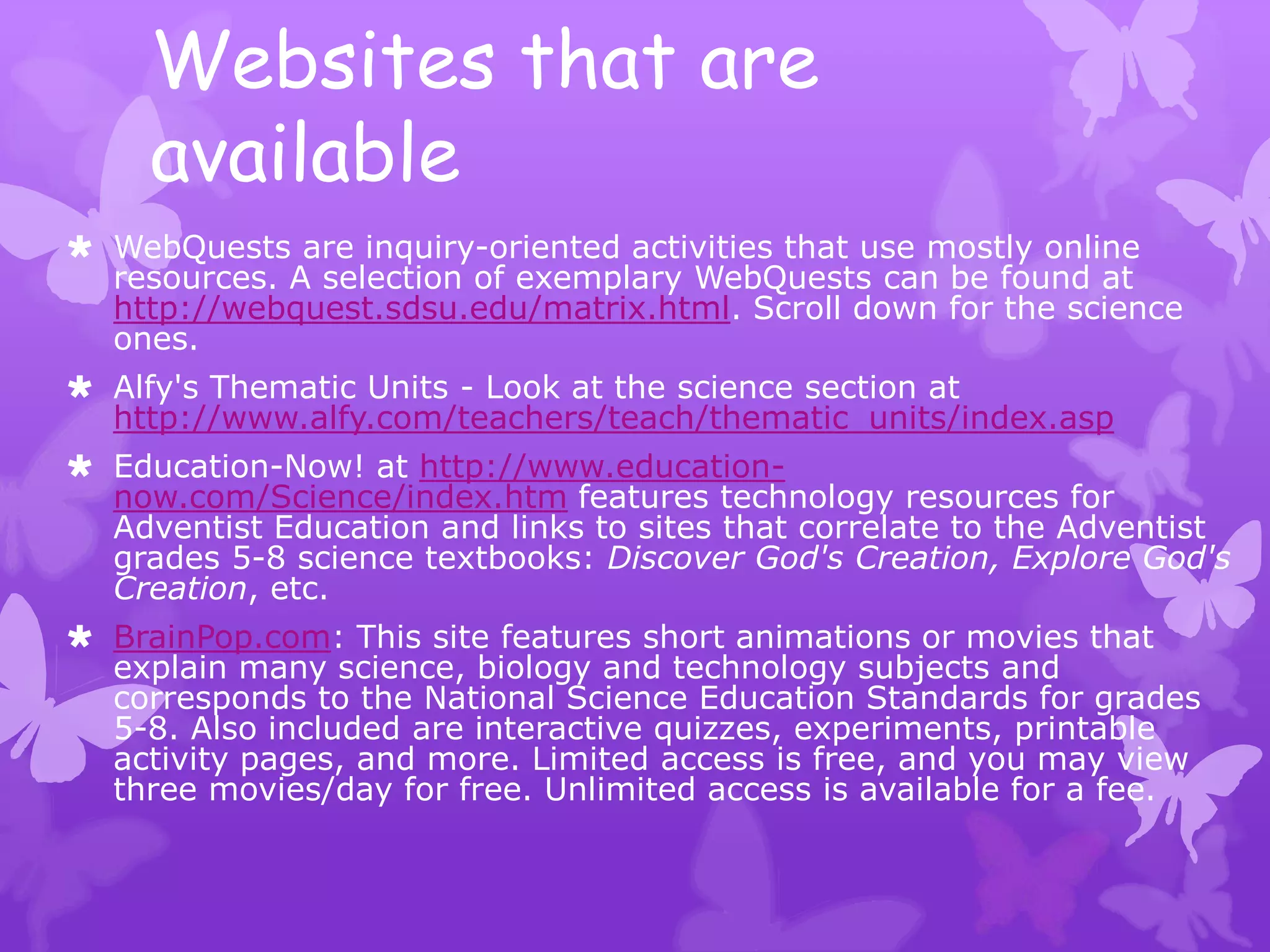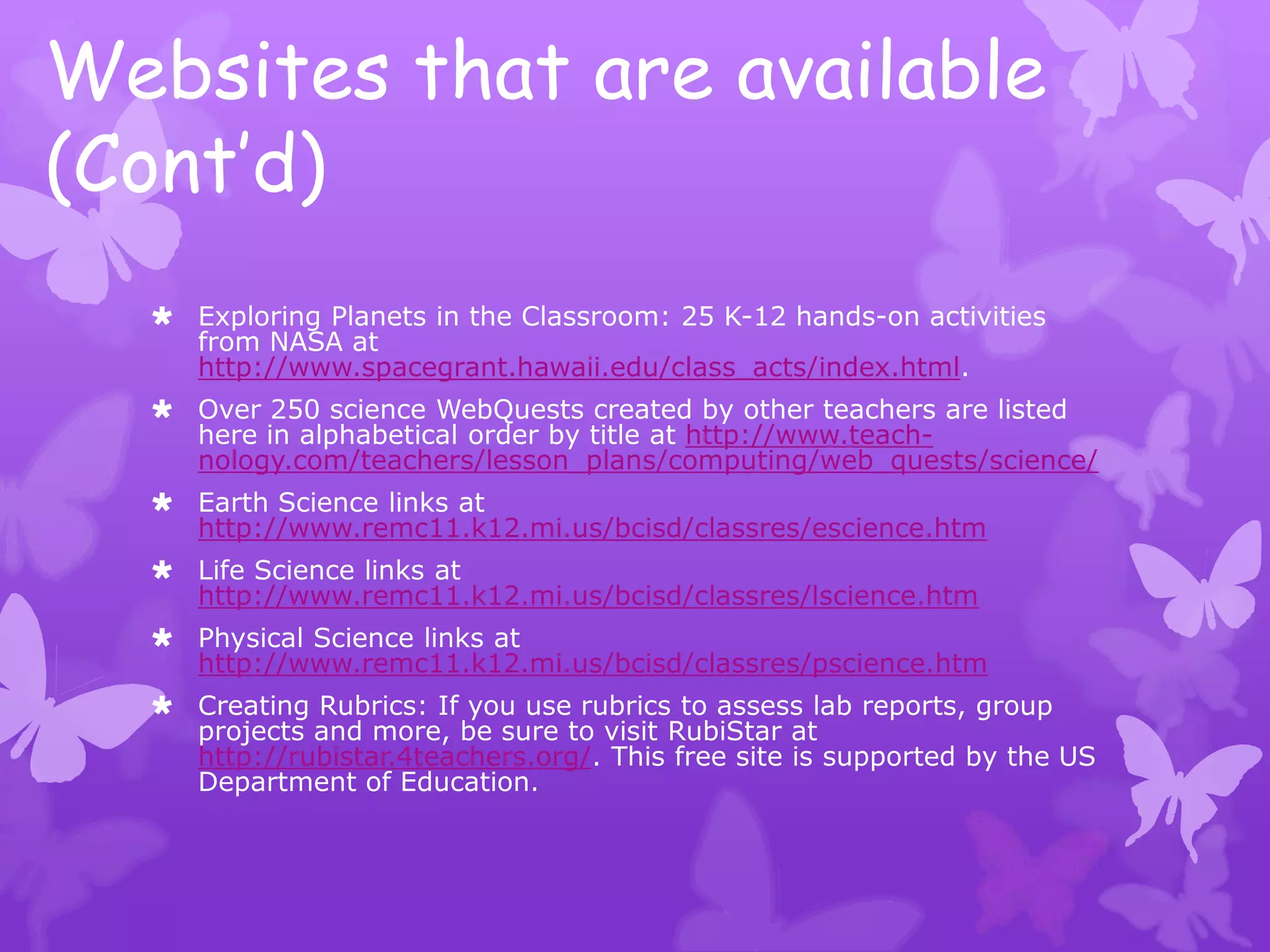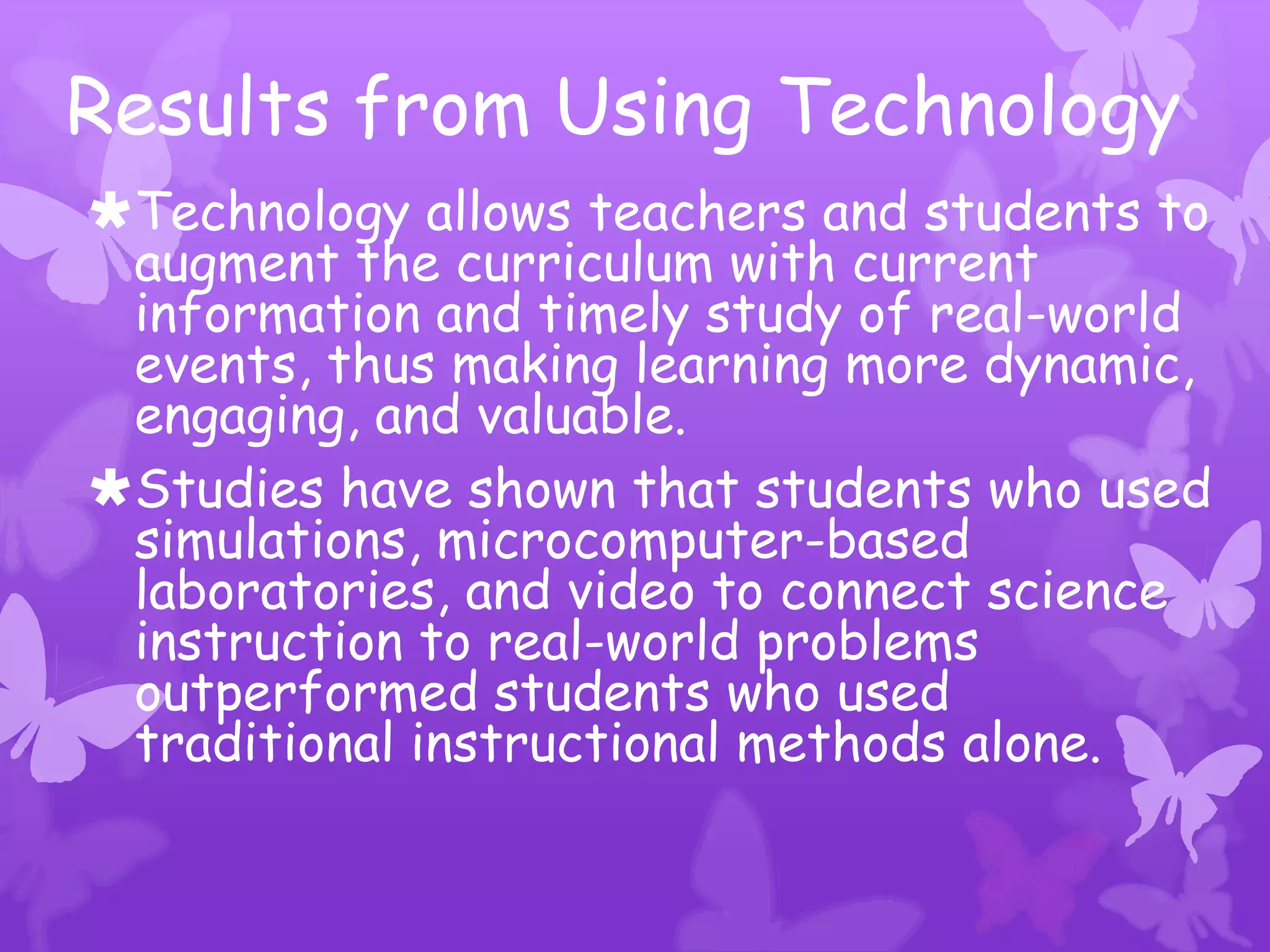Applying technology in the science classroom can increase student interest, provide purpose and meaning to lessons, and allow students to see relationships between concepts rather than isolated facts. Technology should enhance learning, not just provide access, and can include websites, digital cameras, probes, handheld devices, and software. When used effectively, technology allows students to study real-world events and outperform those using only traditional methods.
